This article refers to the Barracuda Message Archiver firmware version 5.2 and higher, and Barracuda Archive Search 5.2 and higher.
Locale
The language for Barracuda Archive Search is determined by your Microsoft Office installation locale; supported languages include:
- DE - German
- EN - US English
- ES - Spanish (Continental)
- FR - French
- IT - Italian
- JP - Japanese
- NL - Dutch
- PL - Polish
- CN - Chinese
Step 1. Install Barracuda Archive Search
Use the following steps to install the Barracuda Archive Search Deployment Kit.
- Log in to the Barracuda Message Archiver as an administrator.
- Navigate to the USERS > Client Downloads page, and download the Barracuda Archive Search Deployment Kit .msi file.
- Double-click the .msi file, and click Run to launch the Setup Wizard:
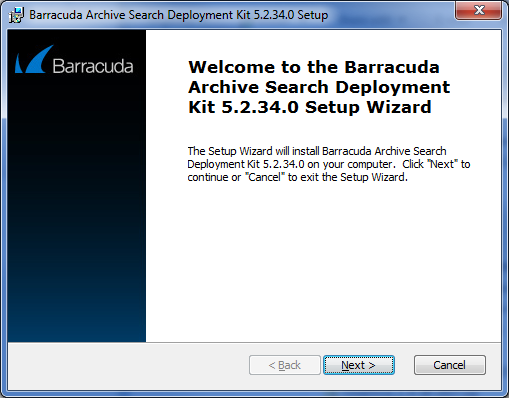
- Click Next, and follow the onscreen instructions to install the deployment kit which includes:
- Windows Installer (BmaSaSearch-version.msi)
- Administrator module (includes ADMX files and locale-specific ADML files)
- On the Domain Controller, copy all ADMX files to the C:\Windows\SYSVOL\$Domain\Policies\PolicyDefinitions directory, where $Domain is your domain, and copy all ADML files to the appropriate sub-directories. For more information, refer to the Microsoft TechNet article Managing Group Policy ADMX Files Step-by-Step Guide.
Step 2. Configure Barracuda Archive Search
Use the following steps to configure Barracuda Archive Search:
Start the Group Policy (GPO) Editor for the domain where you will be installing the utility. You can edit the default policy or create a new policy object and link it to the desired container, for example, the particular OU containing the computers of users that will be using the utility.
In the GPO Editor, navigate to User Configuration > Administrative Templates > Barracuda > Message Archiver, and expand the Archive Search node.
- Double-click the URI of your Barracuda Message Archiver policy, and select Enabled.
- In the Options section, enter the fully qualified URI that Outlook users are to use to access the Barracuda Message Archiver, for example, https://archiver.mycompany.com
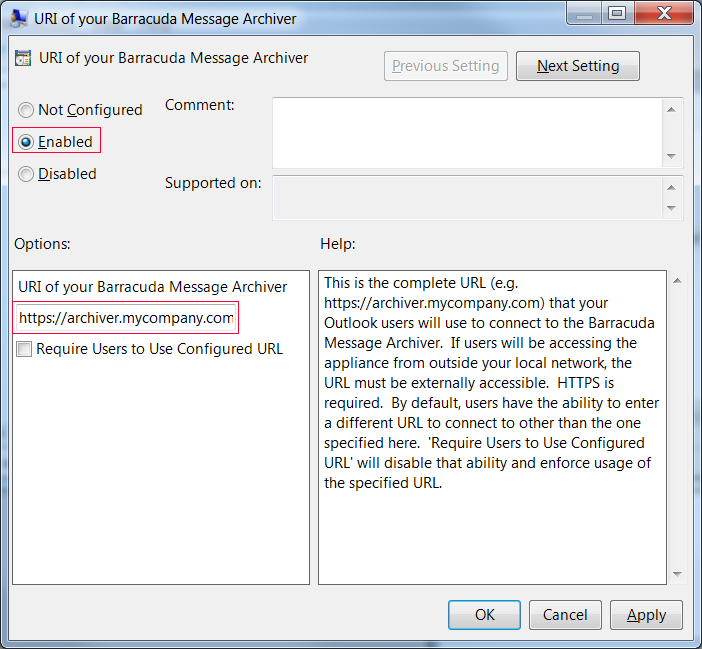
Note the following:- If users will be using the utility to search their messages from outside the local network, the URI must be externally accessible.
- If you have changed the HTTPS port on your Barracuda Message Archiver, include the port number in the URI, for example, https://archiver.mycompany.com:443
- By default users can enter a different URL to connect to other than one specified here; turn on Require Users to Use Configured URL to disable this field and enforce usage of the specified URL.
Click Apply. Configure other settings as required, and click OK to configure the policy. For an explanation of the available settings, click the Extended tab in the policy.
Step 3. Deploy the MSI File
-
If you do not already have a network share for GPO software deployment, you must create one. The share must be accessible from all of the machines on which the software is to be deployed. The permissions for the share must give read access to the "Everyone" group, and the permissions for the underlying NTFS folder must give read access to the "Authenticated Users" group.
- Copy the .msi file(s) to the share you created in the previous step.
Open the GPO Editor for the organization that is to use Barracuda Archive Search, for example, the default domain policy.
-
Either edit the default policy, or create a new policy object, then link it to the desired container. For example, the particular OU containing the computers on which the utility is to be installed.
- In the GPO, navigate to Computer Configuration > Policies > Software Settings > Software Installation:
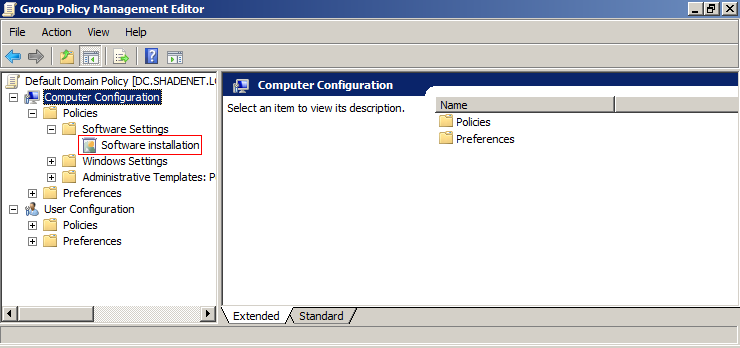
- Right-click Software Installation, point to New, and click Package:
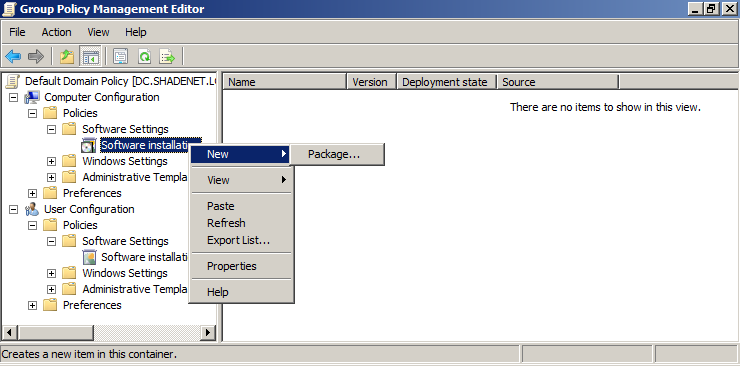
- Enter the UNC path to the .msi file located in the shared folder. For example, type: \\fileserver\deploy
- Click Open. In the Deploy Software dialog box, click Assigned:
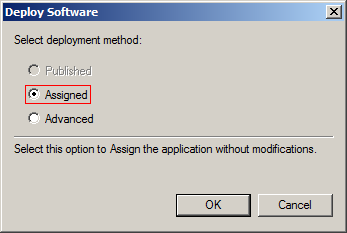
- Click OK. The policy displays in the GPO Editor window.
Test the Deployment
Use the following steps to test the Barracuda Archive Search deployment.
- Restart a computer that is joined to the domain.
- Verify that the utility is installed when you log in, and the configured policies are applied.
Troubleshooting
Following is a list of troubleshooting tips:
- A common cause of failure is that the user and/or the user's computer does not have adequate access to the share location. Verify that all access and network privileges are configured appropriately.
- Verify that the software deployment policy defined in Step 3. Deploy the MSI File was created for computers, not users, and that Assigned was selected in the Deploy Software dialog box.
- Additional error messages are available in the Event Log on the domain computer; if you do not find the desired information in the Event Log, consider enabling verbose logging and restarting the computer.
- For additional information on fixing Group Policy issues, see Fixing Group Policy problems by using log files on the Microsoft TechNet website.
